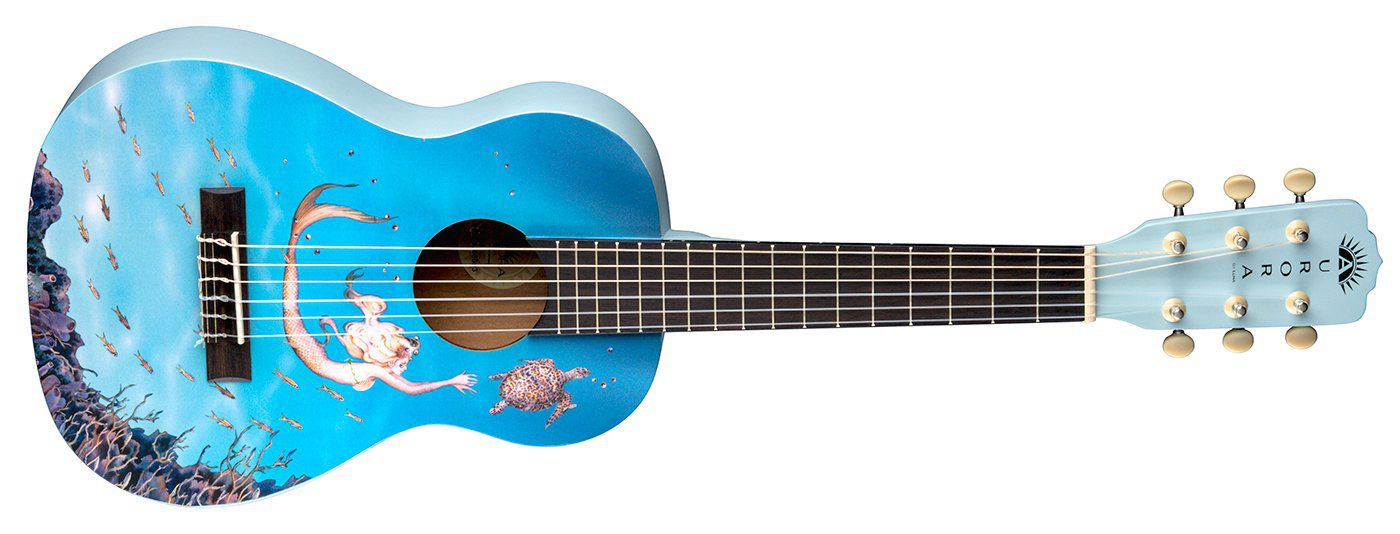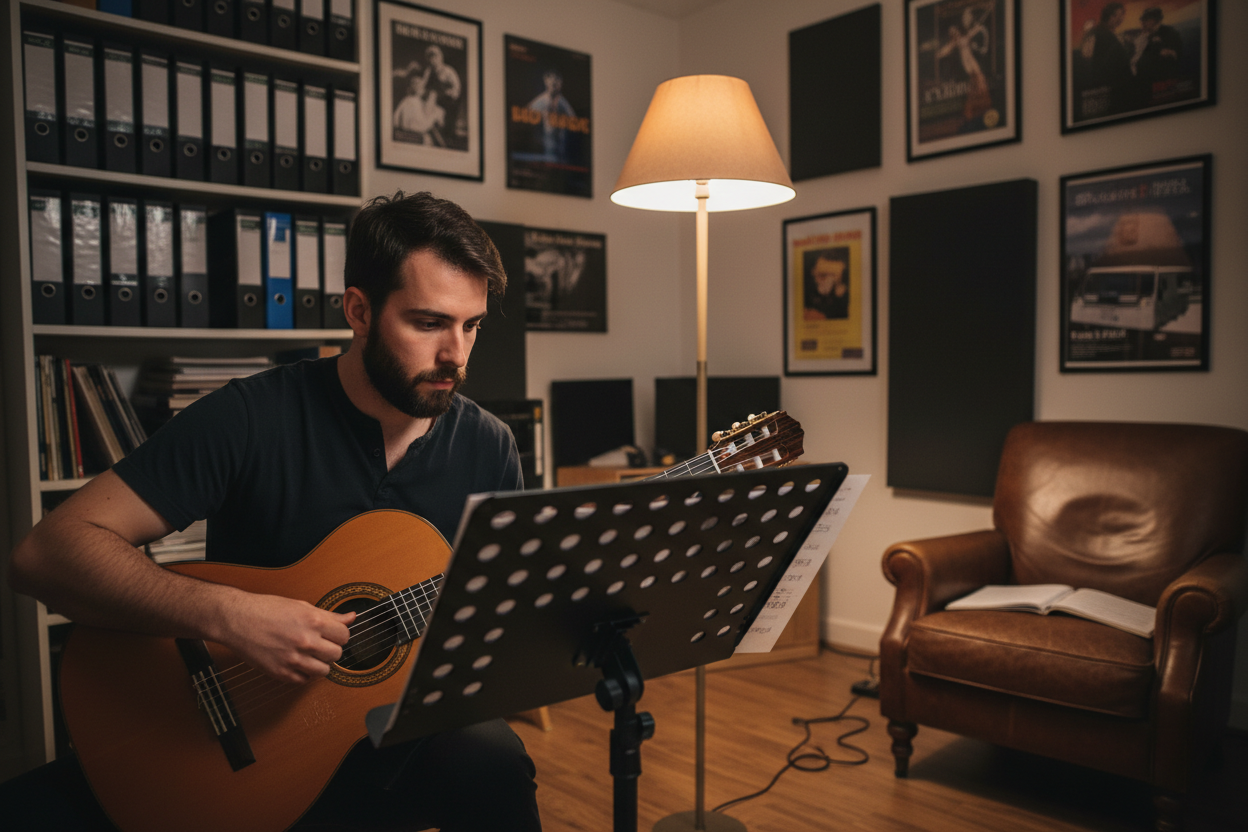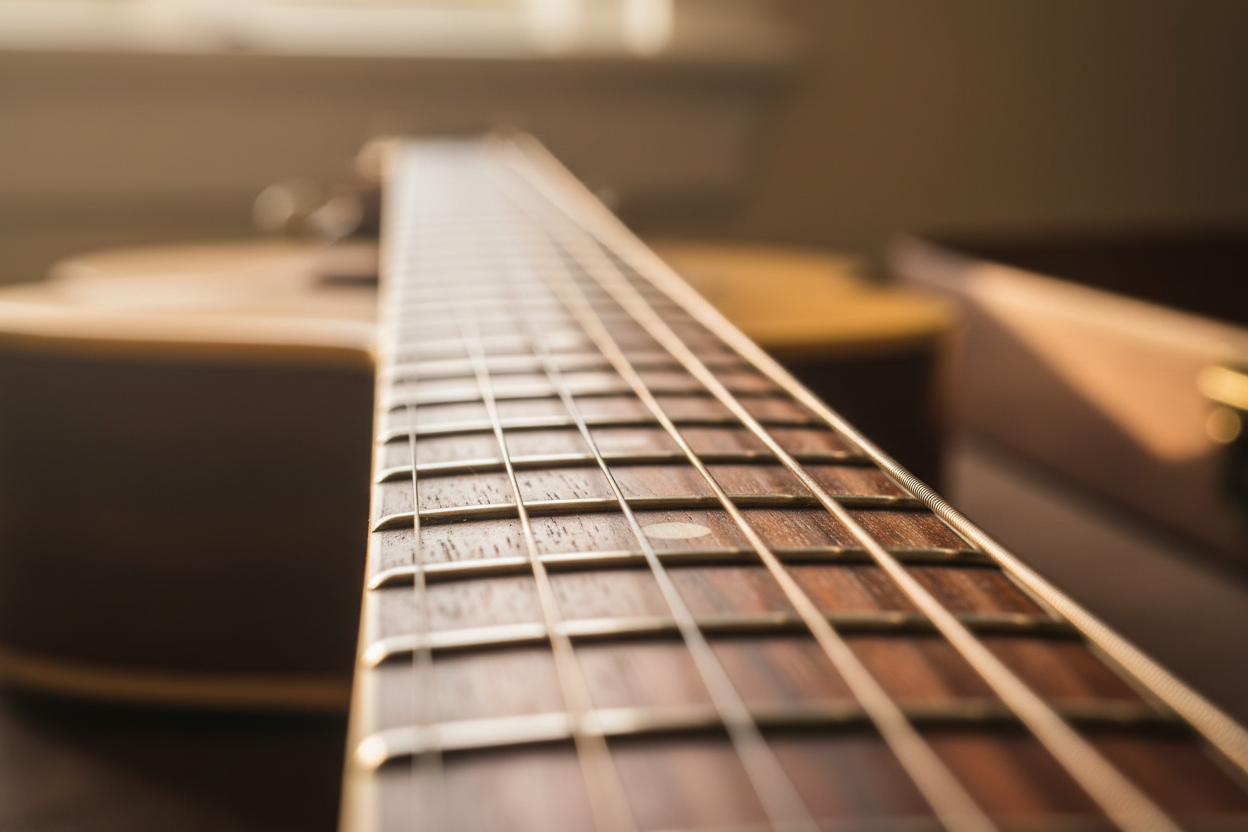Buying your child's first guitar? Here are some common Q & A, and affordable examples of children's guitars we sell to help you make an informed buyers decision.
What size guitar should I buy for my child?
It is best if you can have your child try out the various sizes available in person at your local guitar shop, but if you are shopping online here is a size chart that will help you choose the right guitar.Age Height Guitar Size
3-6 years old 3'3 ″ to 3'9 ″ ¼ size
5-8 years old 3'10" to 4'5 ″ ½ size
7-11 years old 4'6 ″ to 4'11" ¾ size
11+ years old 5′ plus 4/4 full size
The important thing is that the guitar is not too big for your child. That will make it difficult to play.
Should I buy an acoustic or electric guitar for my child?
In our experience of teaching guitar since 2009, we found that the electric guitar is going to be the easiest to play. Many folks assume that an acoustic guitar is the best way to get started, but depending on your child's musical interest, the electric guitar might be a better choice.
You'll have to invest a little more into equipment, but the result is an instrument that is physically easier to play and your child will be more motivated if they are aspiring to be like their favorite rockstar.
Why is an electric guitar easier to play than an Acoustic guitar?
An electric guitar has a smaller body and is more comfortable to play. It also has better action (the space between the fretboard and strings) and lighter gauge strings than an acoustic guitar. The result is easier to press strings and less pain for beginners. After some time, the beginner's fingertips will develop calluses, and playing guitar will not bother their fingers at all.
What equipment will I need for the electric guitar?
All you need to get started is a 1/4" mono cable, at least 10' long and a small practice amplifier. The cable connects your guitar to the amp.My child prefers the sound of an acoustic guitar, should I buy a steel string or nylon?
The nylon string or classical guitars are great for learning on. The strings are softer on the fingers and easy to press. 1/4 through 3/4 sized guitars usually have slimmer necks than standard classical guitars, so they are a good fit for smaller hands.
If your child is big enough to play a standard size classical guitar, the neck might be too wide if they have small hands. Fortunately, there are hybrid models available with slimmer necks.
The tone of the nylon-stringed guitar is soft and mellow. It's not the best instrument for strumming out popular music, but it does sound terrific when you are fingerpicking. For the youngest of students, classical guitars are an excellent choice. With their inexperience, they seem a little easier to please and are happy with any guitar you put in their hands. But older and more experienced children who aspire to be like pop artist Ed Sheeran or Taylor Swift, the nylon string guitars might not deliver the sound they desire.
Steel-string acoustic guitars are the most painful to play. But if your child is set on having a steel-string acoustic, then, by all means, buy it for them. It will be more physically challenging, but it will produce the tone that they desire and be more motivating. Plus, there are ways to reduce beginners pain with steel string guitars.
How can I make my child's steel-string acoustic guitar less painful to play?
The first thing you can do is put lighter strings on it. New guitars typically come with string gauges 12 through 52, put on 9 through 42 and the guitar will handle much better. But, it won't sound as good. You'll have to sacrifice tone for a while until your fingers are tough enough and strong enough to handle the 12's
Another trick is putting a capo at the first fret of the guitar neck and then tuning the guitar to concert pitch. The capo clamps down on the strings making them easier to press.
The capo can also reduce how far the fingers need to stretch to form chords and play scales. The further up the neck you place it, (towards the body of the guitar) the more narrow the fret spacing becomes.
Capos are typically used for changing the key of a guitar while playing open chords, but they also make a great training tool!
If your child still finds it painful to play, you can put nylon folk strings on their guitar. It will change the way the guitar sounds, but it will handle better. Once your child's fingers have gotten stronger, then go back to the light gauge steel strings.
We hope this article has been helpful in making your buying decision with your child's first guitar. But keep in mind, who inspired your child to want to learn how to play? Do they use an acoustic or electric? Your child will be more motivated if they have a guitar similar to their guitar hero.
In my case, I wanted to rock! My first guitar on my 12th birthday was a steel-string acoustic. Painful to play, and not the tone I wanted. The result was I didn't have much drive to practice. When I got my first electric, well then things kicked into gear for me. My interest level spiked, and I have been hooked ever since. So it's important to get the right type of guitar that is most appealing to your child to avoid a negative experience. They will be more excited and motivated, and practicing will be more enjoyable.
And if you are located in or near Mount Joy Pa, we offer children's guitar lessons and have a great selection of child-size guitars to choose from.
If there are any questions that we have not addressed, please comment below, or send us an email and we'll do our best to get you an answer!
Author
Robert Putt




